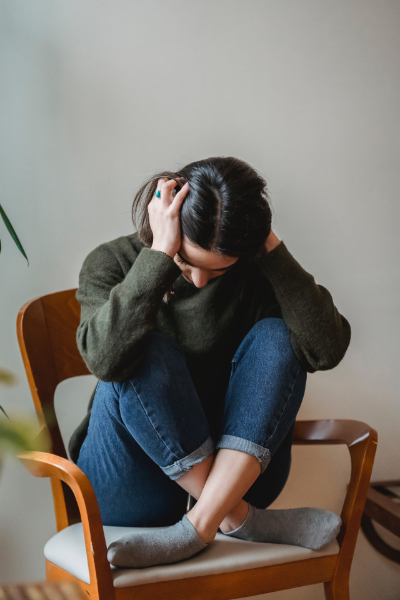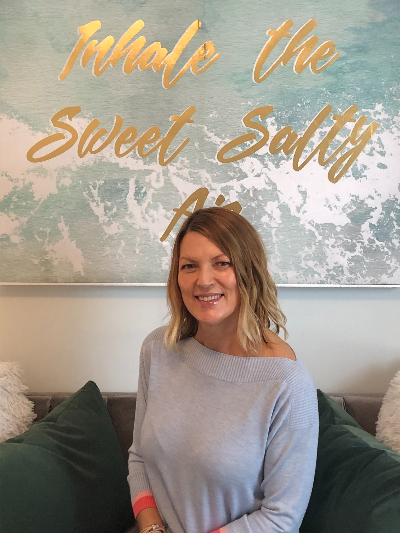
Tips & Tools
Managing your anxiety
A Psychologist’s Insights Into PTSD and Anxiety

June is PTSD Awareness Month, and since PTSD strongly correlates with anxiety, we were intrigued to dig into this topic further! Helen Daymond, Cam's Kids Expert Panel Psychologist, provided some great answers! Post-Traumatic Stress Disorder (PTSD) is often associated with veterans, but it is far from the case that these are the only individuals that have experienced PTSD. Let's take a further look at the correlation between anxiety and PTSD, what we can do about it, and spread the awareness by sharing this insightful information with loved ones, and anyone you think may benefit from it.
 So, what exactly is PTSD, and how is it related to anxiety?
So, what exactly is PTSD, and how is it related to anxiety?
Anyone can get PTSD if they have something traumatic happen to them that feels like it threatens their life or feeling of safety. It can also happen if you see someone else experience something traumatic or even hear about something traumatic happening to someone close to you…like a friend or family member.
PTSD is part of the anxiety 'family,' and the best way to understand how anxiety and PTSD are different is to think of time travelling in your head. Anxiety is like time travelling into the future and worrying/stressing about things that haven’t happened yet, but you think they could happen… PTSD is like time travelling backwards and thinking about bad things that have already happened to you or someone you care about.
What causes PTSD? Who gets it? Are there different types of PTSD?
Many people can experience trauma and then have the kind of feelings you would expect… like feeling freaked out for a couple of days. But then those intense feelings eventually go away.. this is a normal/typical stress response. Although, for some people, those “freaked out” feelings can last longer and worsen! Some will start to re-live what happened, have bad dreams/nightmares, get triggered and avoid things, places or people that remind them of the trauma, feel physically anxious/scared and have other uncomfortable symptoms that get in the way of enjoying life.
 If this happens within three days of the trauma… and the person has symptoms that last less than a month and then go away… this is called acute PTSD. But here’s the tricky part…symptoms can start anytime… like months or even years after the person experiences the trauma, and can be triggered by something that reminds them of the original trauma. When these symptoms last longer than a month and if it isn’t treated…it can cause a lot of distress and suffering for the person and is called “uncomplicated PTSD” ... because it’s caused by only one traumatic event.
If this happens within three days of the trauma… and the person has symptoms that last less than a month and then go away… this is called acute PTSD. But here’s the tricky part…symptoms can start anytime… like months or even years after the person experiences the trauma, and can be triggered by something that reminds them of the original trauma. When these symptoms last longer than a month and if it isn’t treated…it can cause a lot of distress and suffering for the person and is called “uncomplicated PTSD” ... because it’s caused by only one traumatic event.
Another type of PTSD is when the person has more than one traumatic experience. This includes experiencing or witnessing the same traumatic event more than once or over and over… like childhood abuse, including physical/emotional/sexual abuse and/or bullying. If you experience any kind of trauma and then something else happens that’s different but also traumatic... it can become “complex PTSD.”
How trauma affects each of us has to do with many things that are out of our control. Such as our personality, having anxiety or depression, being exposed to other traumas in the past, having other stressors in our lives that we’re already dealing with, and the type of support systems we have like friends and family…any one of these or a combination can turn a normal stress response into PTSD.
When you experience PTSD, it shakes up your world; everything can feel different and strange. It can change your trust in the world as a safe place... where you can’t predict what will happen. Instead, it can leave you feeling powerless... like you have no control over your life and what happens to you.
So, what can you do?
Therapy helps you learn how to take back control of your life and see your world as a safe place. It can help you make sense of the trauma, so you understand it in a different way where you feel less powerless, less guilty, less angry, sad, and negative and more in charge, positive and in control of your life. In therapy, you learn how to ground yourself and calm the physical signs of anxiety that accompany PTSD… like feeling on edge, jumpy and constantly waiting for something bad to happen. You learn to deal with situations that trigger your PTSD by grounding yourself by using your five senses, self-soothing and calming your nervous system, so you don’t have the same anxious or angry response to the trigger.

In conclusion, we can see that anyone that has experienced various forms of trauma can get PTSD and that PTSD is a part of the anxiety ‘family,’ which makes sense why they are so frequently found together. We hope that this Expert Blog by Helen Daymond has supported you in your mental health journey to understand anxiety and PTSD better. Please reach out to [email protected] if you have any further questions about this topic; one of our Experts would be more than happy to help answer your questions! Thank you again to Helen Daymond for being such a fantastic Expert to work with and for providing Cam’s Kids with information that will help so many young lives. We cannot wait to further cover this topic in mid-to-late July on an Instagram Live! Stay tuned, everyone!

Helen Daymond, M.Sc. C.Psych.
Child & Adolescent Psychologist
Email: [email protected]
Website: accesspsychology.ca
- All
-
29 Nutrition
Nutrition
- 73 Mindfulness and Relaxation
- 27 Student Life
- 8 Exercise
- 51 Treatments & Therapies
- Anxiety Resources

Don't see what you're looking for? Send us an email!
©Copyright 2024 Cam’s Kids powered by Kids Help Phone
Not-for-Profit Organization. B/N: 921508-5
Thanks for visiting Cam's Kids. Please remember...
Cam's Kids is not a service provider.
If you are in crisis, please call 911 or go to your nearest emergency department. For free, confidential counselling, contact Good2Talk or Kids Help Phone.
Post-secondary students: find your local crisis resource here.

